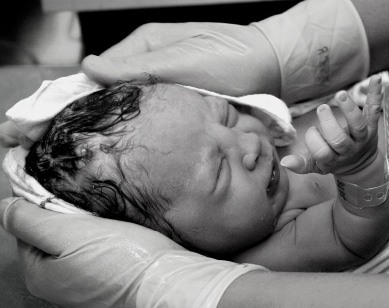The myth surrounding a cesarean birth is that if once a woman has a C-section, she has to have the surgery for all subsequent births. Now, recent changes in national guidelines are prompting more women who have previously had c-sections to try to give birth vaginally, and more providers are willing to offer the choice.
Last year, the National Institutes of Health conducted wide-scale research and showed that vaginal delivery is a “reasonable option” for women with prior C-sections.
After this report, the American College of Obstetricians and Gynecologists too changed its guidelines stating that
“Attempting a vaginal birth after Caesarean is a ‘safe and appropriate choice’ for women, including those carrying twins, with two previous Caesareans, a suspected large baby or gestation beyond 40 weeks.”
Despite the guidelines though recent research shows that C-section rates are at a record high covering 32 percent of all births. This rate has increased 53 percent since 1996. And while many studies have shown that 60 to 80 percent of women with a prior C-section can attempt vaginal births in later deliveries, the rate has fallen to 8 percent from 28 percent in 1996.
Dr. George Macones an expert in the safety of vaginal deliveries after caesareans said,
“I think we’ve seen the bottom of the pendulum with the VBAC rate, and it will swing the other way,”
He will be attending an international biennial conference of the International Cesarean Awareness Network held in St. Louis, April 8-10 to discuss the issue and also to review the latest research that focuses on making labor safer for women.
This network is a non-profit, founded in 1980, that aims to prevent unnecessary cesareans and also provide support for women recovering after surgery.
According to conference director, Maureen Hetrick while the conference will cover issues, such as caring for a Caesarean scar, legislative advocacy, and delivering breech babies, the weekend will focus on educating women and healthcare professionals about the latest evidence regarding vaginal births after Caesareans.
Providing proof of the safety of delivering naturally even after a cesarean Dr. Macones has carried out more than 24 studies. Most women fear of uterine rupture which is the c-section scar breaking apart during labor. But the expert who has reviewed records of almost 25,000 women at multiple hospitals found that the risk of uterine rupture is less than 1 percent.
“VBAC is not as dangerous as it has been painted to be,” Macones said. “Several other obstetric procedures carry the same, if not higher, complication rates.”
The doctor feels the marked decrease in VBAC has been mostly due to the increased use of medications to induce and speed up labour that most often increase the likelihood of C-section. It has also been due to the rising cost of malpractice insurance and finally due to patients’ own preference for surgery.
What also discouraged hospitals and practitioners from allowing women to choose vaginal births has been the previous guidelines of the obstetrician college.
In 1999 the college released guidelines that required a surgical staff to be immediately available to a woman who was attempting a VBAC. This led many hospitals, insurers and physicians to refuse services to women wanting to avoid another C-section.
A survey indicates that nearly half of the physicians and one-third of hospitals do not even offer women a choice of labour after a C-section.
“Given the onerous medical liability climate for ob-gyms, interpretation of the college’s earlier guidelines led many hospitals to refuse to allow VBACs altogether,” said president Dr. Richard Waldman.
The new guidelines now state that vaginal birth after a Caesarean is associated with decreased maternal morbidity and risks of complications in future pregnancies. A failed attempt, however, carries higher risks, making it important for doctors to assess which women are likely to be successful.
Some organizations still feel that the guidelines need to provide more birthing options for women after C-sections.
Macones said he thinks the new guidelines are balanced. “I actually feel like a lot of progress was made in the update,” he said. “I think the key is trying to give women an informed choice.”
Ultimately it is the woman’s choice to be aware of her options even after a C-section. Natural labor is not only safe, it is better for the baby too. – Atula, Staff Writer
Related Articles:







